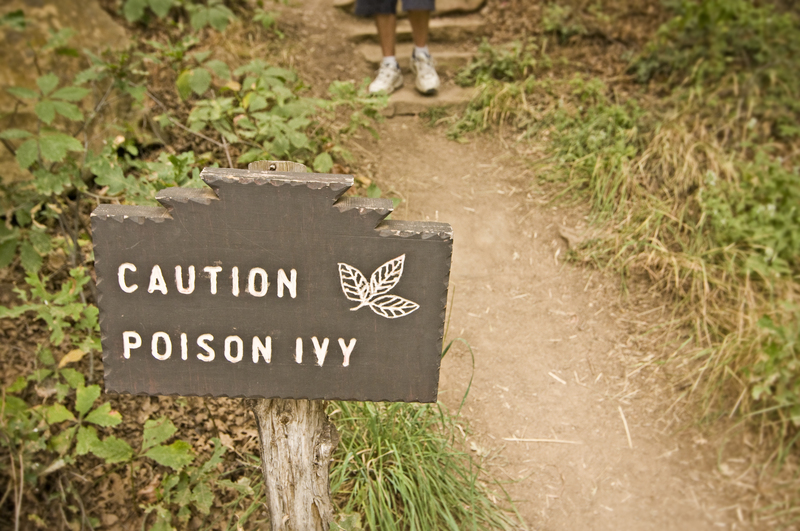Caring for Garden Plants During Frosty Months
Posted on 16/08/2025
Caring for Garden Plants During Frosty Months: A Comprehensive Guide
The arrival of winter brings biting cold, icy winds, and the threat of frost - a challenge for even the most seasoned gardeners. Caring for garden plants during frosty months requires preparation, knowledge, and a touch of creativity. If you're determined to see your beloved plants thrive despite winter's chill, this guide offers everything you need for success. Explore proven techniques, expert insights, and actionable tips for giving your garden all the protection it deserves.
Understanding the Impact of Frost on Garden Plants
Before digging deeper into frost protection techniques, it's essential to understand why frost is such a critical concern for gardens. When the temperature dips below freezing, water inside plant cells begins to crystallize, which can rupture cell walls and lead to wilting, blackening, and plant death.
- First Frost: Usually signals the end of the active growing season for most plants.
- Light Frost (32?F to 29?F / 0?C to -1.6?C): Primarily damages tender, non-hardy plants.
- Hard Frost (below 28?F / -2.2?C): Can kill even many hardy varieties if prolonged.
Vulnerable plant types often include annuals, tender perennials, subtropical species, and some vegetables. However, prolonged cold weather can even threaten traditionally hardy shrubs if left unprotected.

Preparation: The Key to Garden Plant Survival in Winter
Assessing Your Garden Landscape
Effective frost care for garden plants begins with observing your planting layout. Are certain plants in wind-exposed spots or low-lying frost pockets? Do you have containers or raised beds that are more susceptible to temperature swings? These observations inform your frost-busting strategy.
- Map Your Microclimates: South-facing walls, sheltered spots, and areas near fences tend to be warmer. Use these locations for frost-sensitive plants.
- Group Similar Plants: Place tender species together for more efficient blanket covering or cloche placement.
- Inspect for Drainage: Soggy soil in winter can freeze, risking root rot. Improve drainage as needed.
Soil Amendments and Mulching
A rich, well-mulched soil plays a vital role in protecting roots during frigid nights.
- Organic Mulch: Apply a 2-4 inch (5-10 cm) layer of straw, bark, shredded leaves, or compost around the base of perennials, shrubs, and vegetable beds.
- Timing: Mulch after the first hard frost when soil has cooled but not frozen to trap in warmth.
- Root Zone Insulation: For especially prized or sensitive plants, consider double mulching - first with a coarse organic layer, topped by evergreen boughs or fleece for extra insulation.
Feeding and Watering Practices Pre-Frost
Late autumn is not the time for heavy fertilization. High nitrogen can spur growth that's extra vulnerable to frost. Instead:
- Feed in Early Fall: Use balanced, slow-release fertilizers in September to help plants harden off naturally.
- Water Ahead of Cold Snaps: Hydrated plants withstand freezing better. Water thoroughly before any hard freeze, but avoid waterlogging.
Active Frost Protection Methods
1. Covering and Insulating Garden Plants
The most effective front-line defense against cold is simply to cover your plants. Overnight temperatures can fluctuate dangerously, and a few hours of frost may be all it takes to damage tender foliage.
- Frost Cloths & Blankets: Use commercial frost protection fabric, old bed sheets, or burlap. Drape covers loosely to trap warm air but ensure they reach the ground for full enclosure. Remove during the day to avoid overheating.
- Plastic Sheeting: Only use plastic coverings if supported by stakes or hoops; direct contact can cause more harm than good. Ventilate in the morning to prevent dampness and fungal issues.
- Garden Cloches & Bell Jars: Ideal for small vegetable plots or young seedlings. DIY cloches can be crafted from cut plastic bottles.
- Straw and Leaves: For ground-level crops and dormant perennials, heap dry straw or leaves to create a resilient insulating barrier.
2. Moving Tender Plants Indoors
If practical, bring potted or delicate plants indoors before the first frost is forecast.
- Houseplant Relocation: Place indoors in a bright, draft-free spot away from direct heat sources.
- Unheated Sheds or Greenhouses: Use as "cold frames" for acclimating plants to lower light and cooler temperatures, while avoiding freezing conditions.
- Check for Pests: Always inspect before bringing outdoor plants inside to prevent insect stowaways.
3. Utilizing Heat Sources in the Garden
For especially valuable or frost-prone sections of the garden, extra heat may be justified.
- String Lights: Old-fashioned (non-LED) incandescent lights around sensitive shrubs provide gentle warmth.
- Water-Filled Jugs: Place dark-colored water containers around vulnerable plants during the day to absorb heat, then release it at night.
- Cold Frames & Mini-Greenhouses: These structures passively trap solar heat, creating a microclimate several degrees warmer than the ambient air.
Plant-by-Plant Strategies for Frosty Protection
Evergreen Shrubs & Trees
Most evergreens are naturally hardy, but lose substantial moisture through their leaves during cold, windy periods.
- Water Well in Autumn: Ensure roots are hydrated heading into winter.
- Anti-Transpirants: Apply wax-based sprays to reduce winter desiccation if severe cold and wind are expected.
- Wrap Young Trees: Use burlap or tree wrap around trunks to prevent frost cracking and pest damage.
Roses
- Mound with Soil: In late fall, pile soil or compost up around the base to protect graft unions.
- Cover with Mulch: Add a layer of leaves or straw before the first snow.
- Prune Sparingly: Wait until spring to prune back dead wood.
Herbaceous Perennials
- Cut Back After First Frost: Remove spent stems and foliage to discourage overwintering pests.
- Heavy Mulching: Cover crowns with 2-3 inches of straw, compost, or shredded bark.
Vegetable Gardens
- Row Covers and Hoops: Extend the harvest of hardy greens and root crops by protecting them under fabric tunnels.
- Harvest at Risk Crops: Pick any remaining beans, tomatoes, peppers, and squash before a hard freeze hits.
- Add Mulch to Root Crops: Carrots, parsnips, and leeks can often be left in the ground, insulated by a thick mulch layer.
Container Plants
- Elevate & Insulate: Raise pots onto feet or bricks and insulate sides with bubble wrap or burlap to minimize freeze-thaw cycles.
- Move to Sheltered Spots: Group containers by house walls or inside garages during severe cold snaps.
Common Mistakes to Avoid When Winter-Proofing Your Garden
- Overwatering: Waterlogged soil increases the risk of root rot, especially if it freezes.
- Premature Fertilizing: Late-season fertilizer boosts sappy growth that can't withstand winter's cold.
- Excess Trimming: Over-pruning removes protective stems and can shock the plant into new, tender growth - a frost magnet.
- Ineffective Coverings: Loose or inadequately anchored frost covers are prone to blowing away, leaving plants exposed.
- Neglecting Wind Protection: Cold, dry winds are as dangerous as frost. Use burlap screens or windbreaks to shield exposed plants.
Long-Term Strategies for Frost-Resilient Gardens
Choose the Right Plants for Your Climate
Garden success in colder regions starts with selecting cold-hardy plants that match your USDA Plant Hardiness Zone or equivalent. Consult local nurseries for the best cultivars. Even within susceptible species, there is significant variability in frost tolerance.
Design for Microclimate Advantages
Strategically positioning plants for the best shelter and warmth pays long-term dividends. For example, higher ground is less prone to late-spring frosts, and south-facing stone walls both radiate heat and block icy gales.
Permanent Structures for Year-Round Protection
- Cold Frames: Ideal for raising starts early in spring or overwintering less-hardy perennials.
- Greenhouses: Allow year-round cultivation and eliminate almost all frost risk for valuable plants.
- Windbreak Hedges: Plant evergreens as living shelter belts to reduce winter wind exposure for the entire garden.

Frequently Asked Questions about Protecting Garden Plants in Winter
How do I know when to cover my plants?
Watch your local weather forecast for nights predicted to fall below 32?F (0?C). Tender/annual plants should be protected at the first sign of frost, while hardy perennials generally need coverage only during unusually severe cold stretches.
Are there any eco-friendly alternatives to synthetic covers?
Absolutely. Layered straw, old linens, jute burlap, and even piles of leaves offer effective, biodegradable insulation. Additionally, reusable frost blankets are available, reducing waste year after year.
Will frost kill all my garden plants?
No. Many shrubs, bulbs, and established perennials are perfectly adapted for winter's worst. With proper mulching and selective insulation, most gardens will come through winter ready to flourish in spring.
Should I remove mulch in spring?
As soon as the risk of hard frost is past and new shoots appear, gently pull mulch back from crowns and stems. This allows soil warming and prevents rot.
Conclusion: Enjoy Year-Round Beauty by Caring for Your Garden During Frosty Months
Winter is not a death sentence for your beloved plants - it's an opportunity to deepen your understanding of the natural world and garden design. With careful planning, vigilance, and a few simple materials, your garden can not only survive but thrive throughout the frostiest months of the year. From effective mulching and coverings to smart plant selection and long-term landscape strategies, each step you take brings your garden closer to resilience and enduring beauty.
By learning the best ways to care for garden plants in winter, you ensure a vibrant, healthy, and ready-to-bloom landscape come springtime.
- Monitor the weather regularly to anticipate frost events.
- Layer, insulate, and shield plants as required for your garden's unique setup.
- Don't forget to celebrate each little green victory during the frosty months!
For more gardening insights and timely tips, keep following our seasonal guides and nurture your plants to their fullest potential, no matter how cold it gets outside.

